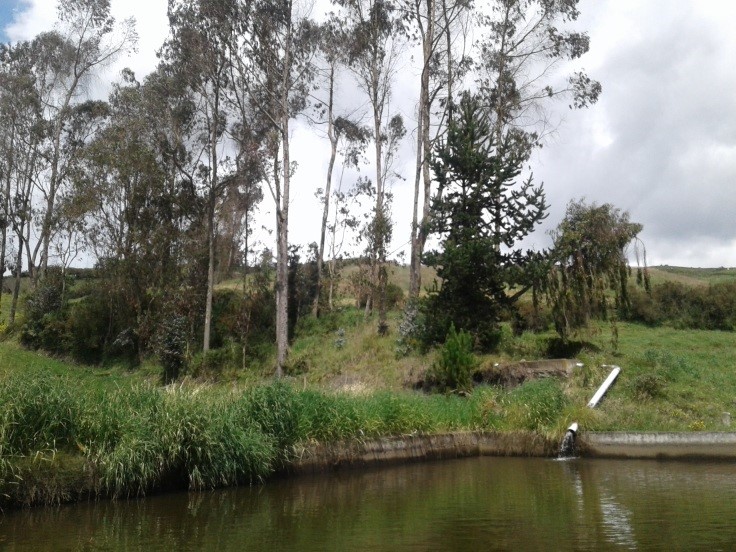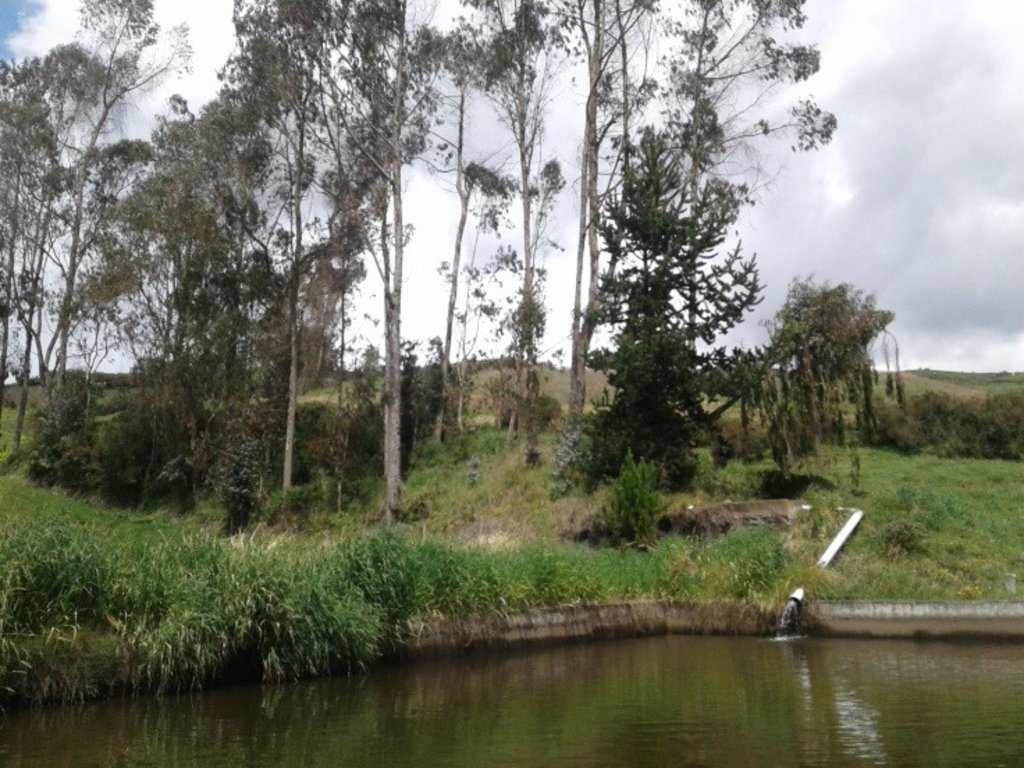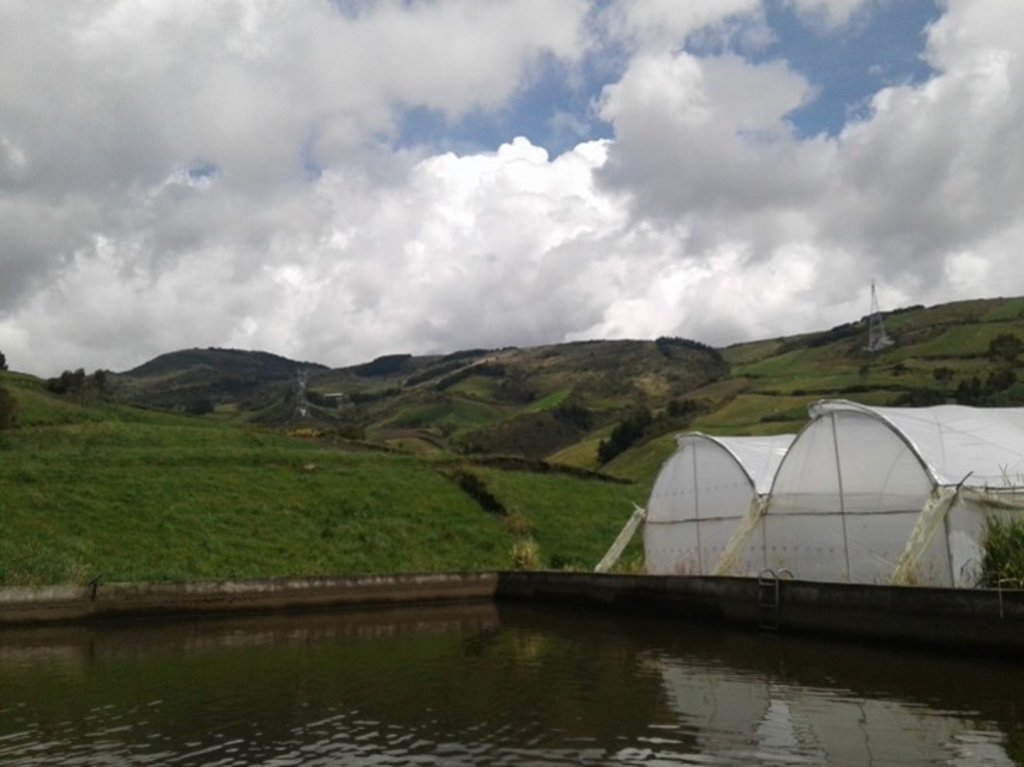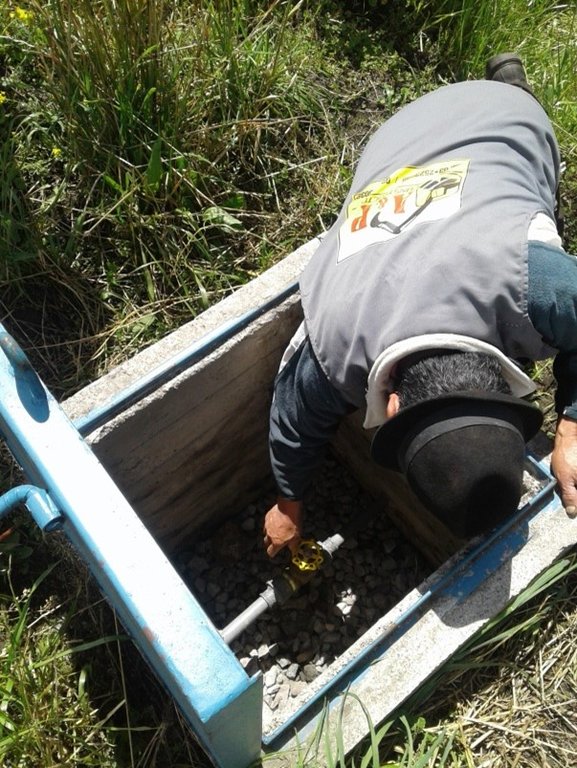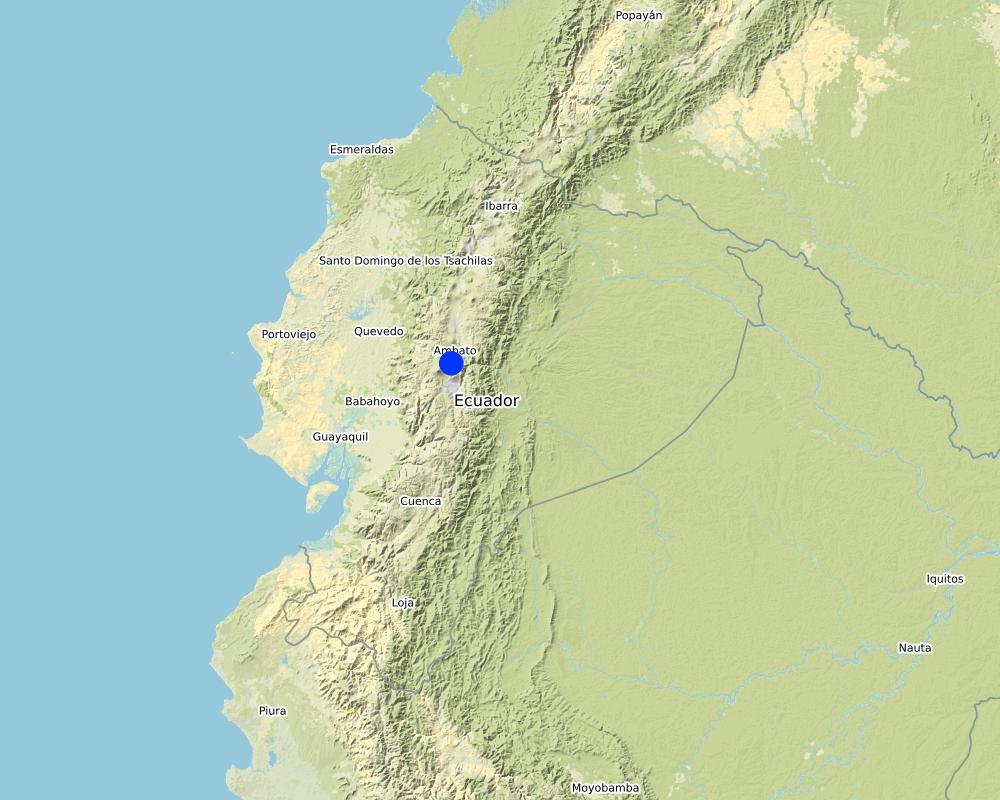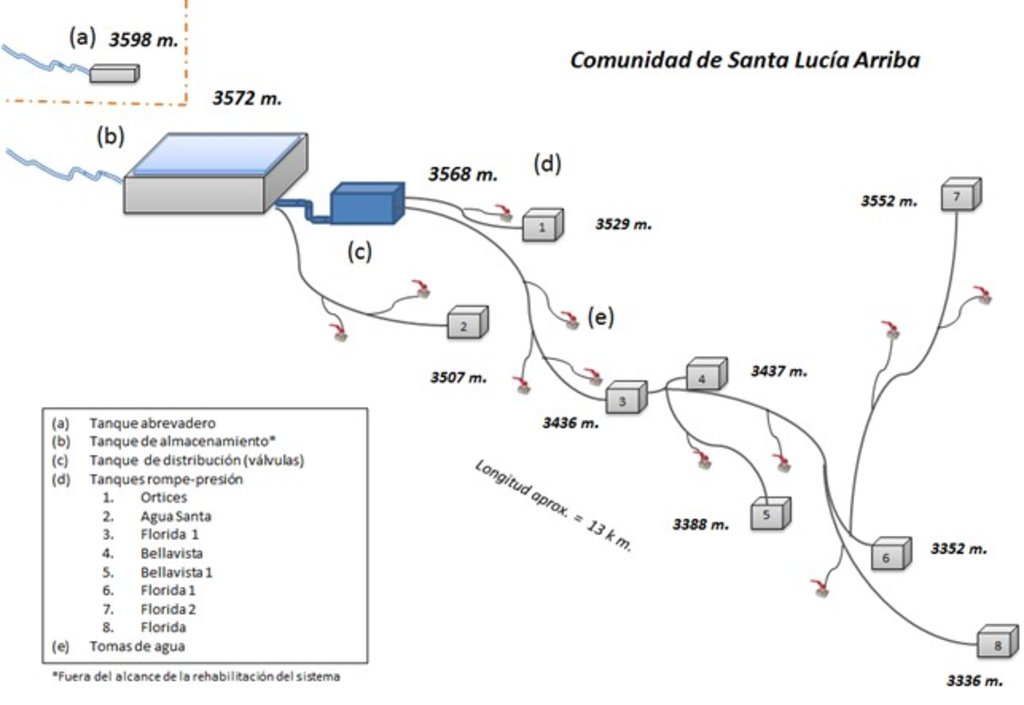Rehabilitación del sistema de abrevaderos en la comunidad de Santa Lucia Arriba. [Ecuador]
- Creation:
- Update:
- Compiler: Raul Galeas
- Editor: –
- Reviewers: Tatenda Lemann, Johanna Jacobi
Comunidad de Santa Lucía Arriba, Parroquia La Matriz, Cantón Tisaleo, Provincia de Tungurahua
technologies_4048 - Ecuador
View sections
Expand all Collapse all1. General information
1.2 Contact details of resource persons and institutions involved in the assessment and documentation of the Technology
Key resource person(s)
Galeas Raul
0986027084
raul12hc@gmail.com
CONDESAN
Calle Germán Alemán E12-123 y Carlos Arroyo del Río.
Ecuador
1.3 Conditions regarding the use of data documented through WOCAT
When were the data compiled (in the field)?
01/06/2017
The compiler and key resource person(s) accept the conditions regarding the use of data documented through WOCAT:
Yes
1.4 Declaration on sustainability of the described Technology
Is the Technology described here problematic with regard to land degradation, so that it cannot be declared a sustainable land management technology?
No
2. Description of the SLM Technology
2.3 Photos of the Technology
2.5 Country/ region/ locations where the Technology has been applied and which are covered by this assessment
Country:
Ecuador
Region/ State/ Province:
Tungurahua
Further specification of location:
Comunidad Santa Lucia
Map
×2.6 Date of implementation
If precise year is not known, indicate approximate date:
- less than 10 years ago (recently)
2.7 Introduction of the Technology
Specify how the Technology was introduced:
- through land users' innovation
- through projects/ external interventions
3. Classification of the SLM Technology
3.1 Main purpose(s) of the Technology
- reduce, prevent, restore land degradation
- conserve ecosystem
- preserve/ improve biodiversity
- create beneficial economic impact
- create beneficial social impact
3.2 Current land use type(s) where the Technology is applied

Cropland
- Annual cropping

Mixed (crops/ grazing/ trees), incl. agroforestry
- Agro-pastoralism
3.3 Further information about land use
Water supply for the land on which the Technology is applied:
- rainfed
Number of growing seasons per year:
- 2
3.4 SLM group to which the Technology belongs
- area closure (stop use, support restoration)
- water harvesting
- irrigation management (incl. water supply, drainage)
3.5 Spread of the Technology
Specify the spread of the Technology:
- evenly spread over an area
If the Technology is evenly spread over an area, indicate approximate area covered:
- 1-10 km2
3.6 SLM measures comprising the Technology

structural measures
- S7: Water harvesting/ supply/ irrigation equipment

management measures
- M7: Others
3.7 Main types of land degradation addressed by the Technology

physical soil deterioration
- Pc: compaction

water degradation
- Ha: aridification
- Hs: change in quantity of surface water
- Hp: decline of surface water quality
3.8 Prevention, reduction, or restoration of land degradation
Specify the goal of the Technology with regard to land degradation:
- reduce land degradation
4. Technical specifications, implementation activities, inputs, and costs
4.1 Technical drawing of the Technology
4.3 General information regarding the calculation of inputs and costs
Specify how costs and inputs were calculated:
- per Technology area
Specify currency used for cost calculations:
- US Dollars
Indicate average wage cost of hired labour per day:
10-20
4.4 Establishment activities
| Activity | Type of measure | Timing | |
|---|---|---|---|
| 1. | None | Structural | None |
4.5 Costs and inputs needed for establishment
If possible, break down the costs of establishment according to the following table, specifying inputs and costs per input. If you are unable to break down the costs, give an estimation of the total costs of establishing the Technology:
10201.24
| Specify input | Unit | Quantity | Costs per Unit | Total costs per input | % of costs borne by land users | |
|---|---|---|---|---|---|---|
| Labour | None | 1 | 1.0 | 400.0 | 400.0 | 100.0 |
| Construction material | None | 1 | 1.0 | 9801.24 | 9801.24 | |
| Total costs for establishment of the Technology | 10201.24 | |||||
4.6 Maintenance/ recurrent activities
| Activity | Type of measure | Timing/ frequency | |
|---|---|---|---|
| 1. | None | Other measures | None |
| 2. | None | Structural | None |
| 3. | None | Management | None |
4.7 Costs and inputs needed for maintenance/ recurrent activities (per year)
| Specify input | Unit | Quantity | Costs per Unit | Total costs per input | % of costs borne by land users | |
|---|---|---|---|---|---|---|
| Labour | None | None | 40.0 | 15.0 | 600.0 | 100.0 |
| Labour | None | None | 12.0 | 15.0 | 180.0 | 100.0 |
| Labour | None | None | 20.0 | 15.0 | 300.0 | 100.0 |
| Equipment | None | None | 2.0 | 100.0 | 200.0 | 100.0 |
| Equipment | None | None | 10.0 | 12.0 | 120.0 | 100.0 |
| Equipment | None | None | 30.0 | 2.082 | 62.46 | 100.0 |
| Total costs for maintenance of the Technology | 1462.46 | |||||
5. Natural and human environment
5.1 Climate
Annual rainfall
- < 250 mm
- 251-500 mm
- 501-750 mm
- 751-1,000 mm
- 1,001-1,500 mm
- 1,501-2,000 mm
- 2,001-3,000 mm
- 3,001-4,000 mm
- > 4,000 mm
Specify average annual rainfall (if known), in mm:
692.00
Agro-climatic zone
- sub-humid
5.2 Topography
Slopes on average:
- flat (0-2%)
- gentle (3-5%)
- moderate (6-10%)
- rolling (11-15%)
- hilly (16-30%)
- steep (31-60%)
- very steep (>60%)
Landforms:
- plateau/plains
- ridges
- mountain slopes
- hill slopes
- footslopes
- valley floors
Altitudinal zone:
- 0-100 m a.s.l.
- 101-500 m a.s.l.
- 501-1,000 m a.s.l.
- 1,001-1,500 m a.s.l.
- 1,501-2,000 m a.s.l.
- 2,001-2,500 m a.s.l.
- 2,501-3,000 m a.s.l.
- 3,001-4,000 m a.s.l.
- > 4,000 m a.s.l.
Indicate if the Technology is specifically applied in:
- convex situations
5.3 Soils
Soil depth on average:
- very shallow (0-20 cm)
- shallow (21-50 cm)
- moderately deep (51-80 cm)
- deep (81-120 cm)
- very deep (> 120 cm)
Soil texture (topsoil):
- coarse/ light (sandy)
- fine/ heavy (clay)
Soil texture (> 20 cm below surface):
- coarse/ light (sandy)
- fine/ heavy (clay)
Topsoil organic matter:
- medium (1-3%)
5.4 Water availability and quality
Ground water table:
on surface
Availability of surface water:
good
Water quality (untreated):
poor drinking water (treatment required)
Is water salinity a problem?
No
Is flooding of the area occurring?
No
5.5 Biodiversity
Species diversity:
- medium
Habitat diversity:
- medium
5.6 Characteristics of land users applying the Technology
Sedentary or nomadic:
- Sedentary
Market orientation of production system:
- mixed (subsistence/ commercial
Off-farm income:
- 10-50% of all income
Relative level of wealth:
- poor
Individuals or groups:
- individual/ household
- groups/ community
Level of mechanization:
- manual work
- mechanized/ motorized
Gender:
- women
- men
Age of land users:
- middle-aged
5.7 Average area of land owned or leased by land users applying the Technology
- < 0.5 ha
- 0.5-1 ha
- 1-2 ha
- 2-5 ha
- 5-15 ha
- 15-50 ha
- 50-100 ha
- 100-500 ha
- 500-1,000 ha
- 1,000-10,000 ha
- > 10,000 ha
Is this considered small-, medium- or large-scale (referring to local context)?
- small-scale
5.8 Land ownership, land use rights, and water use rights
- .
Land use rights:
- individual
Water use rights:
- open access (unorganized)
- communal (organized)
5.9 Access to services and infrastructure
health:
- poor
- moderate
- good
education:
- poor
- moderate
- good
technical assistance:
- poor
- moderate
- good
employment (e.g. off-farm):
- poor
- moderate
- good
markets:
- poor
- moderate
- good
energy:
- poor
- moderate
- good
roads and transport:
- poor
- moderate
- good
drinking water and sanitation:
- poor
- moderate
- good
financial services:
- poor
- moderate
- good
6. Impacts and concluding statements
6.1 On-site impacts the Technology has shown
Socio-economic impacts
Production
fodder quality
animal production
Water availability and quality
water availability for livestock
water quality for livestock
Socio-cultural impacts
land use/ water rights
community institutions
conflict mitigation
situation of socially and economically disadvantaged groups
Ecological impacts
Soil
soil compaction
Biodiversity: vegetation, animals
Vegetation cover
Climate and disaster risk reduction
drought impacts
emission of carbon and greenhouse gases
6.2 Off-site impacts the Technology has shown
reliable and stable stream flows in dry season
damage on neighbours' fields
impact of greenhouse gases
6.3 Exposure and sensitivity of the Technology to gradual climate change and climate-related extremes/ disasters (as perceived by land users)
Gradual climate change
Gradual climate change
| Season | Type of climatic change/ extreme | How does the Technology cope with it? | |
|---|---|---|---|
| annual temperature | increase | not well | |
| seasonal rainfall | wet/ rainy season | increase | well |
Climate-related extremes (disasters)
Climatological disasters
| How does the Technology cope with it? | |
|---|---|
| cold wave | moderately |
| drought | not well |
Biological disasters
| How does the Technology cope with it? | |
|---|---|
| epidemic diseases | well |
6.4 Cost-benefit analysis
How do the benefits compare with the establishment costs (from land users’ perspective)?
Short-term returns:
slightly positive
Long-term returns:
positive
How do the benefits compare with the maintenance/ recurrent costs (from land users' perspective)?
Short-term returns:
slightly positive
Long-term returns:
positive
6.5 Adoption of the Technology
- 10-50%
If available, quantify (no. of households and/ or area covered):
160
Of all those who have adopted the Technology, how many have did so spontaneously, i.e. without receiving any material incentives/ payments?
- 90-100%
6.6 Adaptation
Has the Technology been modified recently to adapt to changing conditions?
Yes
other (specify):
.
7. References and links
7.1 Methods/ sources of information
- field visits, field surveys
- interviews with land users
- compilation from reports and other existing documentation
- .
7.2 References to available publications
Title, author, year, ISBN:
"La biodiversidad de los páramos del Ecuador". Mena Vásconez Patricio y Medina Galo. 2001. Abya-Yala / Proyecto Páramo, Quito.
Title, author, year, ISBN:
"La biodiversidad en el Ecuador". Bravo Velásquez Elizabeth. 2014. Universidad Politécnica Salesiana. Cuenca-Ecuador.
Title, author, year, ISBN:
Rehabilitación del sistema de abrevaderos y fumigación de la comunidad Santa Lucia, cantón Tisaleo. Fondo de Páramos Tungurahua y Lucha contra la Pobreza. 2016. Proyecto Plan de Manejo de páramos de la Mancomunidad del Frente Sur Occidental 2016.
Title, author, year, ISBN:
Informe de la Mancomunidad de FSO – Rehabilitación del Sistema de abrevaderos y fumigación de la Comunidad de Santa Lucía Bellavista del Cantón Tisaleo. Mancomunidad de FSO. 2017
Title, author, year, ISBN:
Informe Técnico sobre la ejecución del proyecto “Habilitación del sistema de líneas de conducción de sistemas de abrevaderos Santa Lucía Arriba Tisaleo”. Aguirre Mónica, Guerrero David y Sancho Edison. s/f.
Title, author, year, ISBN:
Plan de Desarrollo y Ordenamiento Territorial. Gobierno Autónomo Descentralizado Municipal de Tisaleo. 2014 – 2019.
Title, author, year, ISBN:
Reporte de Pobreza y Desigualdad. Diciembre 2016. INEC. Dirección responsable de la información estadística y contenidos: Dirección de Innovación en Métricas y Metodologías.
Title, author, year, ISBN:
Plan de Desarrollo Turístico del cantón Tisaleo, provincia de Tungurahua. Verónica Paola Muñoz Pazmiño. 2013. Tesis pregrado en Ecoturismo. Escuela Superior Politécnica de Chimborazo.
Title, author, year, ISBN:
Introducción a la Hidrogeología del Ecuador (Segunda Versión). Burbano Napoléon, Becerra Simón, Pasquel Efrén. 2014. INAMHI
7.3 Links to relevant information which is available online
Title/ description:
Anuarios meteorológicos del Instituto Nacional de Meteorología e Hidrología INAMHI.
URL:
http://www.forosecuador.ec/forum/ecuador/educaci%C3%B3n-y-ciencia/35393-inamhi-anuarios-metereol%C3%B3gicos-en-pdf
Title/ description:
Boletín Anual del Instituto Nacional de Meteorología e Hidrología.
URL:
http://www.serviciometeorologico.gob.ec/boletin-anual/
Title/ description:
Sistema Nacional de Información. Página de la Secretaría Nacional de Planificación y Desarrollo del Ecuador.
URL:
http://app.sni.gob.ec/web/menu/
Title/ description:
Catálogo Electrónico del Servicio Nacional de Contratación Pública.
URL:
https://catalogo.compraspublicas.gob.ec/buscar?valor=machete
Links and modules
Expand all Collapse allLinks
No links
Modules
No modules


